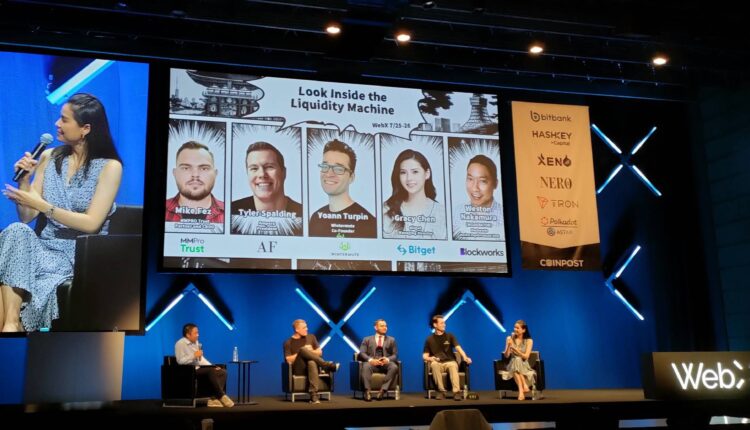One area where artificial intelligence (Ai) technologies are rapidly synergizing with blockchain is at cryptocurrency exchanges. Since the beginning of the year, Binance has launched an AI-powered nonfungible tokens (NFTs) generator for authenticated users. Meanwhile, OKX has introduced an AI integration to monitor market volatility. Bybit has also plugged into ChatGPT for AI-powered trading tools.
On the other hand, cryptocurrency exchange Bitget has rolled out a series of AI-trading bots starting in June. On July 27, the exchange launched a new Commodities Trading Advisor (CTA) AI bot. In an interview with Cointelegraph, Gracy Chen, Bitget’s managing director, explained the benefits and risk factors in detail.
We’re bringing AI to Grid Trading.
That’s right, you can now choose between 3 earning options depending on your risk appetite.
The upgrade allows more accessibility and is optimized for profits.
Check it out! https://t.co/3pHLLHZAqY pic.twitter.com/GSzaObHvIg
— Gracy Chen @Bitget (@GracyBitget) July 11, 2023
Cointelegraph: What is the difference between the CTA AI bot and a regular commodities trading algorithm?
Gracy Chen (GC): The AI bot consists of MACD [moving average convergence divergence] and Boll [Bollinger band] indicator strategies. It outputs new strategy logic by continuously receiving historical strategy data, analyzing and processing the data, thereby realizing self-learning. So AI strategies help users choose and create strategies more intuitively by only needing a simple rate of return number and price chart, eliminating the need to fill in complex parameters like in algorithms.
CT: While AI models can perform competently under normal conditions, they tend to behave erratically during extraneous events, such as a sudden increase or decrease in price. Are there any safeguards for users in this regard?
GC: This is undoubtedly a huge impact that any trading platform will face. In particular, the biggest impact on the revenue of CTA AI strategy is that we are prone to receive many false signals during the operation resulting in possible losses. That said, we try to protect the interest of the users through two ways:
The AI strategies we launched are all based on large K-line [candlestick] time periods to calculate indicators (the minimum K-line period is 1 hour). Therefore, many abnormal fluctuations in short periods will be smoothed out in large periods, which can effectively reduce the impact of false signals.
In addition, we also provide users with the option of stop profit and stop loss in the advanced settings, which can automatically help users to stop profit and stop loss to protect the rights and interests of the account.
CT: Since CTA strategies are mostly utilized for exchange-traded commodities like soybeans or oil, how does this strategy apply in particular to crypto?
GC: CTA strategies, in principle, grasp market fluctuations based on the relationship between volume and price. They are more effective in more volatile markets, such as cryptocurrencies. Coins and tokens are more prone to large fluctuations due to its cutting-edge technology, advancement of the times, and diversity of participants from all over the world.
CT: In our previous discussion, you mentioned that multiple Bitget departments are currently experimenting with AI; can you raise a specific example?
GC: We use AI technology to conduct sample training, analysis, and processing according to different user trading habits to achieve intelligent recommendation content for different groups of people. In addition, we are using AI to perform manual tasks such as generating posters, copywriting, and simple codes.
CT: What are some advantages of AI-powered trading compared to human or algorithmic trading methods?
GC: AI strategies can help users choose and create strategies more intuitively through a simple rate of return number and price chart, eliminating the need to fill in complex parameters such as algorithms.
In the future, Chen explained that Bitget will learn from the success of large language models (LLMs) such as ChatGPT to improve its AI bots. “We know that the success of ChatGPT is mainly due to two aspects, super large sample data, and smart learning model. And our AI strategy will also start from these two aspects to improve the profitability,” she said.

Collect this article as an NFT to preserve this moment in history and show your support for independent journalism in the crypto space.
Magazine: AI Eye: AI’s trained on AI content go MAD, is Threads a loss leader for AI data?

